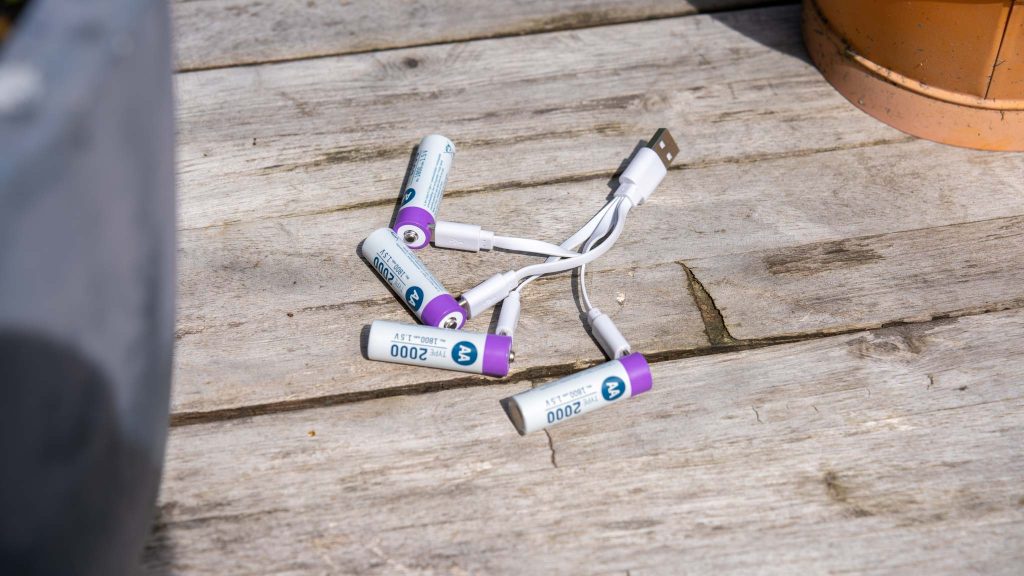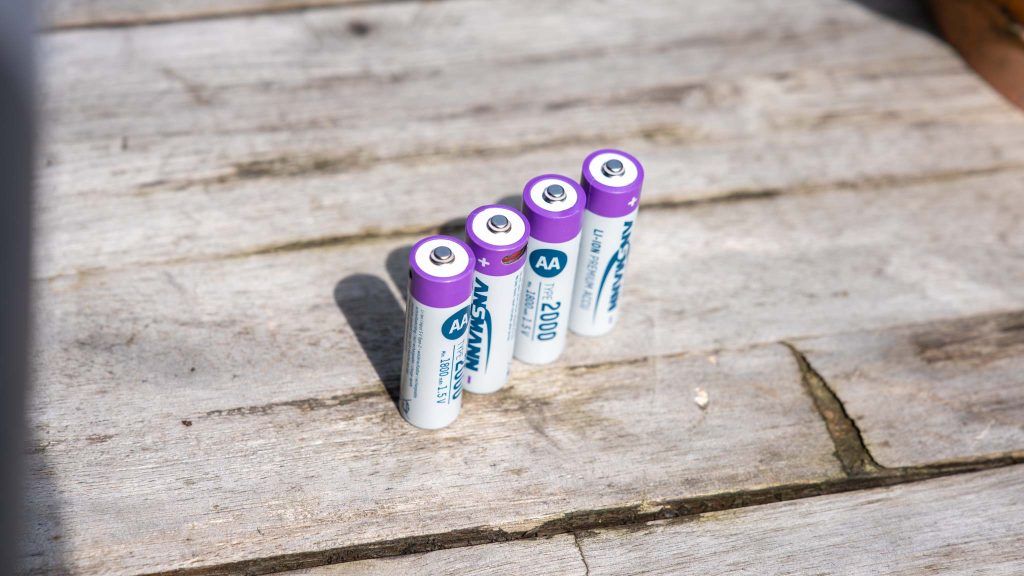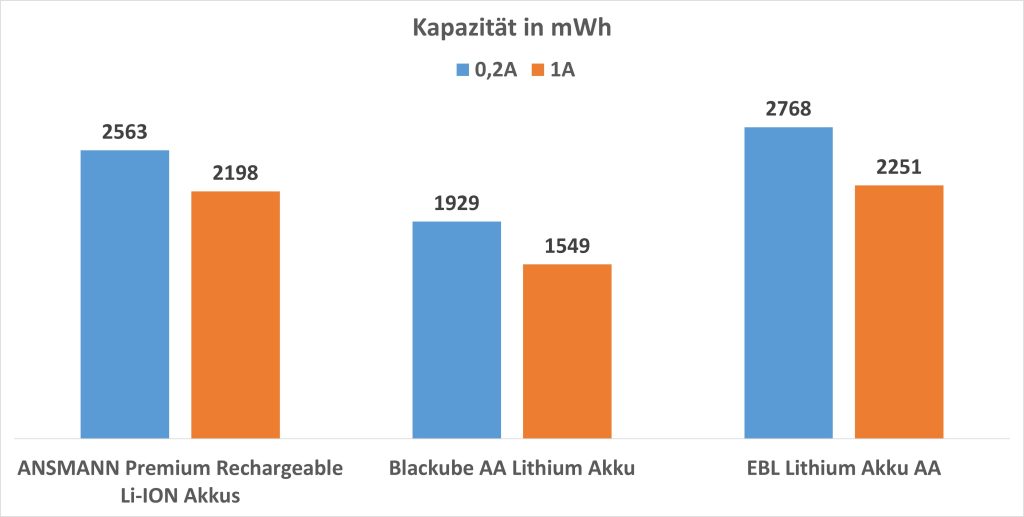Rechargeable AA batteries usually have a significant drawback. They typically rely on Ni-MH battery technology, which works well but provides a lower voltage of only around 1.2V. As a result, some devices don’t perform well with these batteries.
Additionally, traditional AA rechargeable batteries are not protected against deep discharge. LED lights or candles, in particular, tend to drain batteries to 0, which can effectively end the life of a regular AA rechargeable battery.
However, there is now an exciting alternative: AA lithium-based rechargeable batteries. We have already tested a few of these rechargeable AA lithium batteries from EBL and Blackube.
Now, the German manufacturer ANSMANN has also introduced similar models to the market.
In this test, we will take a closer look at the ANSMANN Premium Rechargeable Li-ION AA batteries. Can they impress, and how do they compare to EBL and Blackube?
At this point, we would like to extend our thanks to ANSMANN for providing the batteries for this test.
Test ANSMANN Rechargeable AA Lithium Batteries
At first glance, the ANSMANN Premium Rechargeable Li-ION AA batteries appear to be standard “AA batteries” with a white/purple design.
However, as soon as you turn the batteries, you’ll quickly notice the USB-C port on the side of each battery. Yes, these batteries are charged via USB-C. But more on that later.
To avoid having to connect each battery individually to a charger, ANSMANN includes a 1x USB A to 4x USB C adapter cable, allowing you to charge all the batteries simultaneously.
Another noticeable feature is the weight. Each battery weighs only 17g. For comparison:
- ANSMANN Premium Rechargeable Li-ION – 17g
- Aerocell AA Battery – 24g
- Eneloop Pro AA Battery – 30g
So, a rechargeable Lithium AA battery is significantly lighter than a regular AA battery.
This is simply due to the lithium-ion technology used.
Capacity Calculation Challenges
For AA batteries, capacity is typically expressed in milliampere-hours (mAh). Some AA batteries can exceed 2800 mAh in capacity.
However, ANSMANN lists the capacity of its Premium Rechargeable Li-ION batteries as “only” 2000 mAh, which may seem low. But there’s a reason for this.
The capacity rating for normal Ni-MH batteries is at a voltage of 1.2V. The rating here is at a voltage of 1.5V. So, we have effectively 25% higher voltage.
Keep this in mind! The battery has 25% more “power” (voltage) than a 2000 mAh Ni-MH battery.
In simple terms, an Ni-MH battery in an LED string would probably last longer than an ANSMANN battery but might not shine as brightly during that time.
Capacity
Let’s take a look at the capacity of the batteries. I tested them under a load of 0.2A and 1A, measuring capacity in mAh and Wh. I tested all four batteries in the set.
| mAh | 0,2A | 1A |
| AA -1 | 1701 | 1529 |
| AA -2 | 1727 | 1559 |
| AA -3 | 1724 | 1569 |
| AA -4 | 1750 | 1560 |
| mWh | 0,2A | 1A |
| AA -1 | 2539 | 2149 |
| AA -2 | 2549 | 2227 |
| AA -3 | 2553 | 2176 |
| AA -4 | 2609 | 2238 |
Unfortunately, I didn’t quite reach ANSMANN’s stated capacity, but this isn’t unusual. On average, I achieved a capacity of 1726 mAh at 0.2A load and 1554 mAh at 1A load.
These values corresponded to 2563 mWh at 0.2A and 2198 mWh at 1A load.
At first glance, 1726 mAh may not seem particularly impressive. However, in terms of effective energy, it’s more than what’s in an Eneloop battery.
- Eneloop Pro AA Battery – 3057 mWh
- ANSMANN Premium Rechargeable Li-ION Batteries – 2563 mWh
- Eneloop AA Battery – 2347 mWh
Comparison to Other Rechargeable Lithium Batteries
Let’s compare the capacity to other rechargeable lithium AA batteries from EBL and Blackube.
The EBL battery indeed has slightly higher energy capacity than the ANSMANN battery. However, the Blackube battery has significantly less.
Interesting Voltage Behavior!
One unique feature of rechargeable lithium AA batteries is their voltage. These batteries have an integrated inverter that fixes the voltage at 1.5xx V.
As a result, devices using these batteries always have full power, just like with fresh regular batteries.
However, this also has a drawback. You or the devices cannot detect when the batteries are running low. This typically happens through monitoring the battery voltage. When the voltage drops below a certain level, devices may report, “Hey, the battery is almost empty.”
This doesn’t work with EBL and Blackube batteries, for example.
ANSMANN has done something very clever here!
Just before the ANSMANN AA Lithium batteries run out, the voltage drops from 1.5V to 1.1V.
This signals your devices, “Hey, the batteries are running low,” and for LED lights, you can see that they have become dimmer. This reduces the likelihood of being suddenly left with dead batteries.
I consider this a really good feature!
Charging Time
You simply charge the ANSMANN Premium Rechargeable Li-ION batteries with a USB charger.
The charging time for one battery is approximately 2 hours and 20 minutes, which is the same for all the batteries using the 4x cable.
Conclusion
Lithium-based AA batteries are a very good choice! They not only offer higher performance than regular AA batteries but are also protected against deep discharge.
However, they may not last as long and are more expensive due to their higher complexity.
This core principle also applies to the ANSMANN Premium Rechargeable Li-ION batteries. For lithium-based AA batteries, they have good capacity (1726 mAh or 2563 mWh), and the constant voltage of 1.5 volts ensures that all your devices always run at full power.
However, there’s a unique feature with these rechargeable lithium batteries. They provide approximately 90% of their capacity at a constant voltage of 1.5V, which then drops to 1.1V shortly before they are depleted. This helps you recognize when the batteries need recharging.
This is a feature that the other comparable lithium batteries I’m aware of don’t have! With them, all devices run at 100% power until they suddenly go dead.
In my view, this is a significant advantage of the ANSMANN Premium Rechargeable Li-ION batteries, which, combined with their good capacity, makes me confidently recommend these batteries!









